Unraveling the Mysteries of the Scorpius Constellation
As we gaze up at the night sky, our eyes are often drawn to the sparkling beauty of the stars. But among these celestial wonders, one constellation has captured the imagination of humans throughout history. Welcome to the enigmatic realm of Scorpius, a constellation that has fascinated astronomers, storytellers, and stargazers alike. In this article, we embark on a journey to unlock the secrets of Scorpius, delving into its ancient origins, cultural significance, and the captivating scientific discoveries that have been made within its celestial borders. Let us embark on a voyage of exploration and unravel the mysteries of this bewitching constellation.
Contents
- A Brief History
- Unveiling Scorpius: Facts and Figures
- Mystical Legends and Mythology
- Scientific Discoveries
- Exploring with Telescopes and Observatories
- The Future of Scorpius Exploration
- Conclusion
-
Frequently Asked Questions
- 1. What is the significance of the constellation Scorpius?
- 2. Where can Scorpius be seen in the night sky?
- 3. What are some of the brightest stars in Scorpius?
- 4. Are there any notable features within Scorpius?
- 5. What is the connection between Scorpius and Greek mythology?
- 6. How does Scorpius feature in Native American legends?
- 7. Are there any exoplanets discovered within Scorpius?
- 8. What is the role of Scorpius in stellar evolution?
- 9. Can Scorpius be observed with amateur telescopes?
- 10. Are there any dedicated observatories studying Scorpius?
- References
-
Frequently Asked Questions
- 1. How did the Scorpius constellation get its name?
- 2. What is the significance of the bright star named Antares in Scorpius?
- 3. Can I see Scorpius from anywhere in the world?
- 4. Are there any famous deep-sky objects within Scorpius?
- 5. Is Scorpius visible all year round?
- 6. How far away is the closest star to Earth within Scorpius?
- 7. Can I spot any planets in the Scorpius constellation?
- 8. Are there any notable meteor showers associated with Scorpius?
- 9. What role did Scorpius play in ancient astrology?
- 10. Can I observe Scorpius with a basic telescope?
- References
- Read More
A Brief History
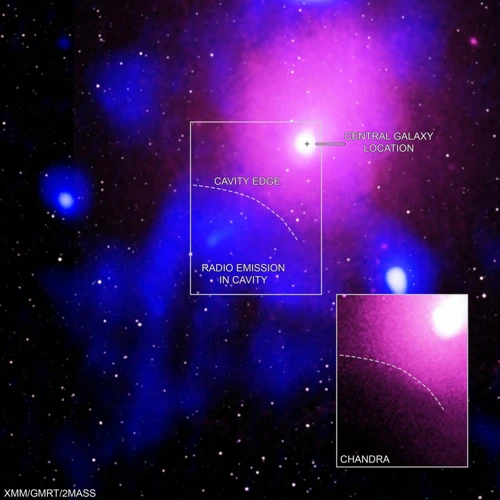
Scorpius, as we know it today, has a rich history dating back to ancient civilizations. From the ancient origins of this constellation to its cultural significance, let us take a journey through time and unravel the fascinating history behind Scorpius.
The tale of Scorpius begins in ancient Mesopotamia, where it was depicted as a scorpion in their celestial mythology. The Babylonians associated Scorpius with their warrior goddess Ishtar, while the Sumerians considered it a symbol of destruction and chaos.
Moving westward, Scorpius finds its place in Greek mythology, where it is commonly associated with the story of Orion the Hunter. According to the Greek myth, Scorpius was sent by the Earth goddess Gaia to sting Orion after he boasted about his hunting prowess. The scorpion was then immortalized in the sky as a cautionary tale for human arrogance.
Scorpius held great cultural significance for various civilizations throughout history. In Ancient Egypt, the constellation was linked to the goddess Isis, symbolizing her protective and transformative powers. The ancient Egyptians observed Scorpius in the night sky during the time of the Nile floods, associating it with the cycle of life, death, and regeneration.
In Native American cultures, Scorpius represented a diverse range of meanings. For the Navajo people, the constellation was seen as a celestial reminder of the need for balance and harmony in life. In the Lakota Sioux tradition, it was associated with the scorpion-like constellation of the mythical figure Blue Star Woman, who delivered the stars to her people.
The rich tapestry of cultural interpretations surrounding Scorpius showcases the universal fascination and reverence for this enigmatic constellation. It reflects the way different cultures perceive and relate to the natural world.
Whether viewed through the lens of ancient mythology or the cultural significance attributed to it by various civilizations, Scorpius continues to captivate our imaginations and pique our curiosity. Next, we will uncover the position and location of this intriguing constellation in the night sky.
1. Ancient Origins
1. Ancient Origins
The ancient origins of Scorpius can be traced back to the earliest civilizations that observed the night sky. In Mesopotamia, the cradle of civilization, the Sumerians were among the first to recognize the scorpion-like form in the stars and incorporate it into their celestial mythology. To them, Scorpius represented the venomous creature that embodied destruction and chaos. This concept was later inherited by the Babylonians, who associated Scorpius with the warrior goddess Ishtar. The Greeks, too, were captivated by the fascinating form of Scorpius. The constellation played a prominent role in Greek mythology, particularly in the story of Orion the Hunter. The Greeks believed that Scorpius was responsible for Orion’s demise, as the scorpion was sent by Gaia, the Earth goddess, to punish him for his arrogance. The scorpion’s image was forever etched in the sky as a reminder of the consequences of hubris. These ancient beliefs and interpretations of Scorpius set the stage for its enduring significance in astronomy and mythology. To this day, the constellation continues to ignite the human imagination and inspire curiosity about the mysteries of the universe.
2. Cultural Significance
Scorpius has a rich cultural significance that reaches across different civilizations and time periods, demonstrating the enduring fascination and reverence for this celestial wonder.
In Greek mythology, Scorpius is strongly associated with the story of Orion the Hunter, adding depth and meaning to its symbolism. In this tale, Scorpius plays the role of a cautionary figure, sent by the Earth goddess Gaia to sting Orion. This celestial battle between Scorpius and Orion serves as a reminder of the consequences of pride and hubris.
Another culture that found cultural significance in Scorpius is ancient Egypt. Here, the constellation was linked to Isis, the goddess of protection and transformation. In Egyptian mythology, Scorpius was observed during the time of the Nile floods, making it symbolize the cycle of life, death, and regeneration.
Native American cultures also assigned importance to Scorpius. The Navajo people saw the constellation as a celestial reminder of maintaining balance and harmony in life. In the Lakota Sioux tradition, Scorpius connected to the scorpion-like constellation called Blue Star Woman, who brought the stars to her people.
These cultural interpretations highlight the universal fascination and deep-rooted significance of Scorpius. It tells stories of caution, transformation, and the interconnectedness of human experience with the cosmos. To explore more about the cultural significance of constellations, you may visit /ophiuchus-native-american-legends/.
Next, we will delve into the position and location of Scorpius in the night sky, unraveling its spatial mysteries.
Unveiling Scorpius: Facts and Figures

When it comes to unraveling the mysteries of the Scorpius constellation, understanding its facts and figures is essential. From its position and location in the night sky to its brightest stars and notable features, let us delve into the captivating details of Scorpius.
1. Position and Location: Scorpius is one of the twelve zodiac constellations and can be spotted in the southern hemisphere. Its celestial coordinates lie between 210° and 270° longitude and -40° to -30° declination. To locate Scorpius, look for the distinctive shape resembling a scorpion with its curved tail and pincers.
2. Brightest Stars: One of the remarkable aspects of Scorpius is its collection of bright stars. The most prominent star is Antares, often referred to as the “heart of the scorpion.” Its reddish hue and immense size make it a captivating sight in the night sky. Other notable stars in Scorpius include Graffias, Dschubba, and Sargas, each contributing to the constellation’s dazzling appearance.
3. Notable Features: Scorpius boasts several intriguing features that add to its allure. One such feature is the globular cluster, Messier 4, located near the Scorpion’s heart. This cluster is home to thousands of densely packed stars, forming a mesmerizing celestial spectacle. Another notable feature is the stunning open star cluster, NGC 6231, also known as the Northern Jewel Box. With its young, hot stars, it illuminates the surrounding space.
As we uncover the facts and figures of Scorpius, we begin to understand the unique characteristics that make this constellation a celestial wonder. From its position in the night sky to its brightest stars and intriguing features, Scorpius continues to captivate stargazers and astronomers alike. Next, we delve into the mystical legends and mythology associated with this enigmatic constellation.
1. Position and Location
Positioned in the southern hemisphere, Scorpius is one of the most prominent constellations in the night sky. It can be found between the constellations of Libra and Sagittarius, nestled near the center of the Milky Way galaxy. Due to its location in the celestial southern hemisphere, Scorpius is more visible to observers in the southern latitudes of the Earth.
Within the boundaries of this captivating constellation lies the bright red giant star Antares, which serves as the “heart” of Scorpius. Antares, also known as the “Rival of Mars,” is visible to the naked eye and is a striking feature of Scorpius. Its reddish hue adds to the allure and mystique of this celestial creature.
In addition to Antares, Scorpius boasts an array of other notable stars, including Shaula and Lesath, which form the scorpion’s stinger. These stars add depth and character to the constellation, creating a visual spectacle for stargazers.
For those dedicated stargazers armed with binoculars or telescopes, Scorpius offers even more celestial wonders to behold. The region houses several deep-sky objects, including the globular cluster Messier 4 and the open clusters NGC 6231 and NGC 6124. These clusters are a real delight for astrophotographers and astronomers, offering glimpses into the vastness and complexity of the universe.
As the night sky shifts throughout the year, the position and visibility of Scorpius change as well. When summer arrives in the southern hemisphere, Scorpius ascends to its highest point in the sky, proudly revealing its mysterious charm to those fortunate enough to witness it. The changing position of Scorpius adds to the intrigue and allure of this captivating constellation.
Now that we have explored the position and location of Scorpius, let’s turn our attention to its brightest stars and the unique features that make them stand out.
2. Brightest Stars
2. Brightest Stars
When gazing at the Scorpius constellation, our eyes are immediately drawn to its brightest stars, which add to the allure and beauty of this celestial formation. Let us delve into the cosmic brilliance of some of Scorpius’ most prominent stars.
Antares:
Known as the “heart of the scorpion,” Antares shines as the brightest star in the Scorpius constellation. Located approximately 550 light-years from Earth, Antares dominates the night sky with its distinctive reddish color. Its name, derived from the Greek word meaning “rival of Mars,” reflects its intensity and resembles the mythical scorpion’s fiery heart.
Shaula:
Another captivating star within Scorpius is Shaula. Situated around 700 light-years away from Earth, Shaula enchants observers with its blue-white radiance. Its name, meaning “the stinger” in Arabic, reflects the star’s position at the end of Scorpius’ tail. Together with Antares, Shaula adds a celestial touch to the scorpion’s enigmatic form, invoking wonder and amazement.
Lesath:
Radiating a brilliant blue hue, Lesath is yet another noteworthy star that graces Scorpius. Nestled in the celestial arachnid’s sting, Lesath shines about 525 light-years away from our planet. Its name, originating from the Arabic word for “the sting,” perfectly captures its role in the constellation’s recognizable shape.
These remarkable stars form the celestial tapestry of Scorpius, illuminating the night sky and guiding our imaginations. Exploring the brightest stars of Scorpius deepens our fascination with this mysterious constellation. In the following section, we will uncover more notable features within the bounds of Scorpius, inviting further intrigue and exploration.
3. Notable Features
Scorpius, the celestial scorpion, boasts several notable features that make it a captivating constellation to explore. From its position and unique shape to its brightest stars and intriguing deep-sky objects, Scorpius offers a multitude of wonders to behold.
One of the most striking features of Scorpius is its distinct shape, resembling a curved letter “J” or a fishhook. This distinct outline makes it easily recognizable in the night sky. Located near the heart of the Milky Way, Scorpius is nestled among a rich tapestry of stars, clusters, and nebulae, adding to its allure.
Scorpius is home to numerous bright stars, with Antares taking the spotlight as its brightest gem. Antares, also known as Alpha Scorpii, shines with a radiant red glow, earning it the designation as a supergiant star. It is one of the largest and most luminous stars in our galaxy, captivating stargazers and astronomers alike. Other prominent stars in Scorpius include Shaula (Lambda Scorpii), Lesath (Upsilon Scorpii), and Sargas (Theta Scorpii), each with its own unique characteristics and celestial brilliance.
In addition to its stellar inhabitants, Scorpius boasts mesmerizing deep-sky objects. One notable example is the Butterfly Cluster (M6), a dazzling open star cluster situated within the scorpion’s “tail.” This cluster consists of dozens of young, hot stars, creating a celestial spectacle that is a delight for amateur astronomers. Another remarkable object is the Ptolemy Cluster (M7), an open star cluster that is easily visible with the naked eye on moonless nights. Its beauty and proximity to the famous Teapot asterism (part of the Sagittarius constellation) make it a popular observation target.
Scorpius hosts the fascinating Lagoon Nebula (Messier 8), an emission nebula located near the scorpion’s “stinger.” The Lagoon Nebula is a hotbed of ongoing star formation, with dense clouds of gas and dust serving as the birthplace of new stars. Its intricate, glowing tendrils entice astronomers to study and photograph its intricate beauty.
The notable features of Scorpius, from its distinctive shape and bright stars to its alluring deep-sky objects, make it a captivating constellation to observe and explore. Eager stargazers and astronomers continue to unravel the mysteries hidden within its borders, contributing to our ever-growing understanding of the universe.
Mystical Legends and Mythology
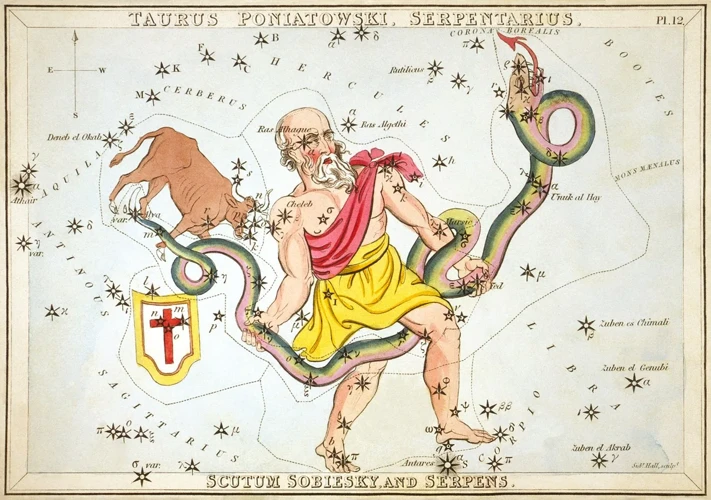
Spanning across cultures and generations, Scorpius has woven itself into a tapestry of mystical legends and mythology. Greek mythology, in particular, offers intriguing tales that unravel the enigmatic nature of this constellation.
In Greek mythology, Scorpius is often associated with the story of Orion the Hunter. According to the myth, Orion was a boastful and skilled hunter who proclaimed his superiority to all creatures on Earth. This arrogance offended the gods, who sent a scorpion, now known as Scorpius, to challenge him. The scorpion stung Orion, causing his demise. In the night sky, Orion and Scorpius are forever separated, with each rising and setting on opposite horizons, perpetually locked in their cosmic battle.
Another captivating Greek myth involving Scorpius revolves around the story of the legendary healer Asclepius. Asclepius, who possessed great knowledge of herbal medicine, had the power to resurrect the dead. This ability disturbed the balance between the mortal and immortal realms, and Zeus, the king of the gods, struck him down with a thunderbolt. After his death, Asclepius was immortalized in the night sky as the constellation Ophiuchus, which lies close to Scorpius.
Beyond Greek mythology, other cultures have also attached significance to Scorpius. In ancient Egyptian mythology, Scorpius was associated with the goddess Selket, who guarded the transition between life and death. The presence of Scorpius in the night sky during the time of the Nile floods further solidified its association with the cycle of life and transformation.
Native American cultures also have their own interpretations of Scorpius. In some Native American legends, Scorpius represents a celestial hunter, while in others, it is associated with the transformation of stars into spirits.
These captivating myths and legends surrounding Scorpius not only add to the allure of this constellation but also provide us with a glimpse into the intricate relationship humans have formed with the night sky. They serve as a reminder of the timeless stories and beliefs that have shaped our understanding of the universe. Next, we will explore the scientific discoveries made within the celestial borders of Scorpius.
1. Greek Mythology
Greek mythology weaves captivating tales around the constellation of Scorpius. According to the ancient Greeks, Scorpius is intricately connected to the story of Orion the Hunter. The myth goes that Orion boasted about his hunting skills, claiming that he could slay any creature on Earth. In response to his arrogance, Gaia, the Earth goddess, sent a scorpion named Scorpius to teach Orion a lesson. The scorpion stung Orion, leading to his demise. Zeus, the king of the gods, was moved by their fates and placed both Scorpius and Orion in the night sky as a perpetual reminder of their encounter and the dangers of hubris. This tale not only explains the position of Scorpius among the stars but also serves as a cautionary reminder of the consequences that can befall those who underestimate the natural world. The Greek myth of Scorpius and Orion lives on as a part of our celestial heritage, inspiring awe and fascination across generations. To learn about other cultural depictions of Scorpius, continue reading the next section.
2. Other Cultural Depictions
Scorpius, the mesmerizing constellation, has left its mark on various cultures across the globe. Beyond its connections in Greek mythology and Native American traditions, Scorpius has made appearances in other cultural depictions as well.
In Chinese astrology, the constellation of Scorpius is associated with the sign of the Snake. In Chinese mythology, the Snake is regarded as a symbol of wisdom and cunning, embodying both positive and negative qualities. Individuals born under the sign of the Snake are believed to possess intuitive and strategic qualities.
In Hindu mythology, the constellation Scorpius is associated with Jyeshtha, the eldest and most respected wife of the moon god Chandra. Jyeshtha is often depicted as a wise and strong-willed goddess, symbolizing feminine power and independence.
In contemporary Western astrology, Scorpius is represented by the Scorpion, which is linked to intense emotions, passion, and transformation. Those born under the sign of Scorpio are said to be resourceful, determined, and capable of deep emotional connections.
The diverse cultural depictions of Scorpius highlight its universal appeal and its ability to transcend borders and time. Each interpretation sheds light on the different facets of human experience and the profound relationship between humans and the cosmos.
While the significance attributed to Scorpius may vary across cultures, its allure and influence remain ever-present. As we continue our exploration, we will delve into the scientific discoveries that have unraveled the mysteries of this celestial wonder.
Scientific Discoveries
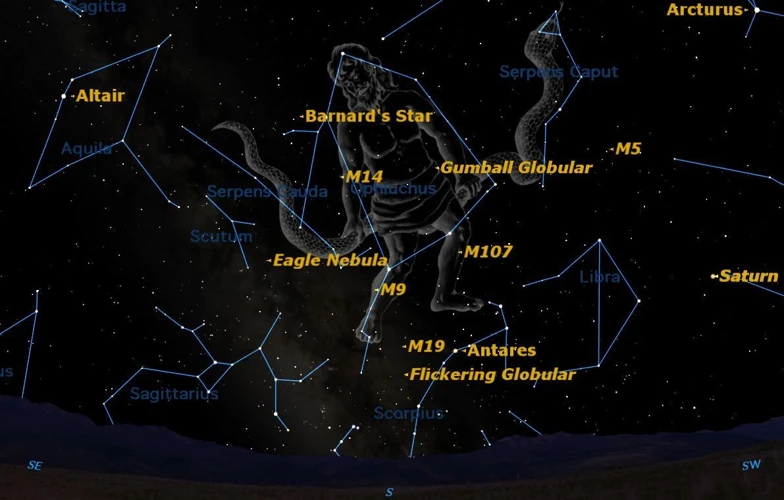
The exploration of Scorpius doesn’t end with ancient myths and legends. Modern scientific discoveries have shed light on the mysteries hidden within this celestial wonder.
1. Exoplanets and Extrasolar Systems: Scientists have employed various techniques, such as the transit method and radial velocity method, to detect exoplanets within the boundaries of Scorpius. In 2011, the Kepler spacecraft identified a potential Earth-like exoplanet named Kepler-10b within this constellation. This discovery has fueled the excitement for finding habitable worlds beyond our solar system and unraveling the possibilities of extraterrestrial life.
2. Stellar Evolution and Black Holes: Scorpius is home to several stars in different stages of their evolutionary journey. Through the study of these stars, astronomers have gained crucial insights into the life cycles of stars, including their birth, aging, and ultimate demise. In recent years, the discovery of a black hole named Scorpius X-1 has captivated scientists. This binary system consists of a normal star and a massive black hole, providing an intriguing laboratory for studying the effects of black holes on their surroundings.
The scientific discoveries in Scorpius have expanded our knowledge of the universe and opened new avenues for exploration. From the search for exoplanets to the study of stellar evolution and black holes, this constellation continues to reveal its secrets, offering valuable insights into the workings of the cosmos. Next, we will explore the different ways in which enthusiasts can observe Scorpius through telescopes and observatories, expanding our horizons in the realm of astronomy and discovery.
1. Exoplanets and Extrasolar Systems
1. Exoplanets and Extrasolar Systems
Scorpius, with its mesmerizing stars, has played a pivotal role in expanding our knowledge of exoplanets and extrasolar systems. Astronomers have turned their gaze towards this constellation to identify and study planets beyond our solar system.
One noteworthy discovery in Scorpius is the exoplanet system known as HD 147506. Located approximately 194 light-years away, this system consists of a gas giant planet named HD 147506 b. This planet, which orbits close to its host star, has provided valuable insights into the formation and dynamics of exoplanetary systems.
In recent years, researchers have also used innovative techniques like gravitational microlensing to detect faint, distant planets in the Scorpius constellation. This method relies on the gravitational influence of a planet to bend and amplify light from a background star, allowing astronomers to identify the presence of these elusive celestial bodies.
Within Scorpius, the discovery of exoplanets has sparked a scientific excitement as it expands our understanding of planetary systems and their formation. By studying these distant worlds, scientists hope to unravel the mysteries surrounding the prevalence and diversity of exoplanets in our galaxy.
As our exploration of Scorpius continues, we will shift our focus towards the fascinating realm of stellar evolution and black holes, shedding light on the secrets hiding within the vast expanses of this enigmatic constellation.
2. Stellar Evolution and Black Holes
Stellar evolution and black holes are two intriguing subjects that intertwine within the expansive boundaries of the Scorpius constellation. Within Scorpius, several stars are in different stages of their evolution, offering a unique opportunity for astronomers to study and understand the life cycles of these celestial bodies.
One notable star within Scorpius is Antares, a red supergiant that is nearing the end of its life. Scientists have been closely monitoring this massive star, as its eventual demise is expected to result in a spectacular explosion known as a supernova. This event will not only provide valuable insights into stellar evolution but also produce remnants that could potentially lead to the formation of a black hole.
Black holes, the enigmatic cosmic objects with gravity so strong that nothing, not even light, can escape their grasp, have long fascinated scientists and stargazers alike. Scorpius houses several binary star systems that are prime candidates for harboring hidden black holes. These systems consist of a massive star and a companion star, and as the massive star evolves, it may collapse into a black hole, pulling matter from its companion star into its event horizon.
Studying stellar evolution and black holes within the Scorpius constellation allows us to further our understanding of the life cycles of stars and the complex phenomena associated with their transformations. By unraveling the mysteries of these celestial entities, scientists can piece together the intricate dance between matter and gravity in the cosmos. As we delve deeper into the secrets of Scorpius, we gain a greater appreciation for the vastness of the universe and the wonders it holds.
Exploring with Telescopes and Observatories
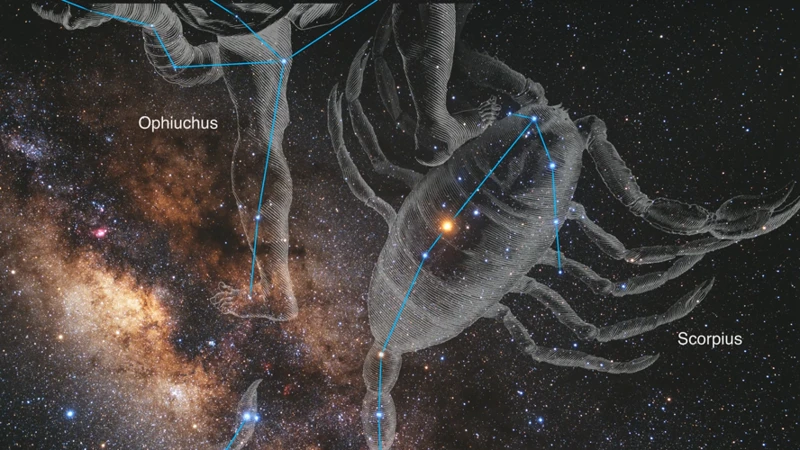
Exploring with Telescopes and Observatories
The wonders of Scorpius extend far beyond ancient mythology and cultural significance. With the aid of modern technology and advancements in astronomy, we can now delve deep into the mysteries of this celestial realm. Telescopes and observatories play a vital role in our exploration of Scorpius and the wider universe beyond.
1. Amateur Stargazing:
For astronomy enthusiasts, amateur stargazing provides a window into the captivating world of Scorpius. Armed with telescopes of varying sizes and specifications, these dedicated observers turn their gazes towards the night sky in search of Scorpius and its celestial wonders. Whether in backyards or at local observatories, amateur astronomers eagerly traverse the constellations, tracing the intricate patterns and mapping the bright stars of Scorpius.
2. Professional Observatories:
While amateur stargazers contribute valuable observations, professional observatories take our exploration of Scorpius to greater heights. Equipped with powerful telescopes and advanced imaging technology, these scientific institutions allow astronomers to study the constellation with exceptional precision and detail.
One such observatory is the European Southern Observatory (ESO) located in Chile. ESO’s Very Large Telescope (VLT) has captured stunning images of Scorpius, revealing its intricate features in unprecedented clarity. Through the collective efforts of professional observatories worldwide, we have come to understand the composition, structure, and dynamics of Scorpius in greater depth.
The use of telescopes and observatories has paved the way for numerous scientific discoveries within Scorpius and beyond. It has enabled us to detect exoplanets orbiting distant stars, furthering our understanding of extrasolar systems and the potential for life beyond Earth. Additionally, the study of stellar evolution and the presence of black holes within Scorpius has provided invaluable insights into the life cycle of stars and the mechanisms behind the formation of these cosmic phenomena.
As we continue our exploration of Scorpius through the lens of telescopes and observatories, the future of scientific discoveries and unraveling the remaining mysteries of this celestial realm seems promising. While the cosmos holds many wonders, the enigma of Scorpius remains a testament to the awe-inspiring beauty and complexity of the universe.
Next, let us ponder the future of Scorpius exploration and what it may hold for both astronomers and stargazers alike.
1. Amateur Stargazing
Amateur stargazing is a beloved pastime for astronomy enthusiasts of all ages, allowing individuals to explore the wonders of the night sky, including the mesmerizing Scorpius constellation. With a few simple tools and techniques, anyone can embark on their own celestial adventure.
Beginners often find it helpful to familiarize themselves with star charts or mobile apps that provide real-time information about the position and visibility of constellations like Scorpius. These resources enable stargazers to locate Scorpius in the night sky and identify its distinctive shape.
To enhance the stargazing experience, using a telescope or binoculars can provide a closer look at the stars and the prominent features within Scorpius. With these tools, stargazers can observe the bright stars, star clusters, and nebulas that adorn the constellation.
One notable feature within Scorpius is the red supergiant star Antares, often referred to as the “Heart of the Scorpion.” Its vibrant red color makes it a captivating sight for amateur astronomers. Located near Antares is the beautiful and easily recognizable globular cluster, Messier 4 (M4). This cluster contains thousands of ancient stars tightly packed together.
As stargazers delve deeper into Scorpius, they may also discover the Butterfly Cluster (M6) and the Ptolemy Cluster (M7), both of which offer stunning views of young stars. These celestial jewels are a testament to the diverse and captivating features within the constellation.
Amateur stargazing also presents an opportunity to observe celestial events such as meteor showers that pass through Scorpius, like the annual Perseids or Orionids. These meteor showers provide an awe-inspiring spectacle as shooting stars streak across the night sky.
Whether it’s scanning the skies with the naked eye or using telescopes and binoculars, amateur stargazing offers a gateway to the wonders of Scorpius and the broader universe. The sense of awe and wonder that comes from exploring the night sky is unmatched, making amateur stargazing an activity that continues to inspire and ignite a passion for astronomy.
In the realm of professional astronomy, dedicated observatories and research facilities specialize in delving even deeper into the mysteries of Scorpius and the universe as a whole. Let’s explore these professional observatories and their contributions to our understanding of the cosmos.
2. Professional Observatories
Professional observatories provide astronomers with advanced tools and technologies to explore the wonders of the universe, including the Scorpius constellation. These state-of-the-art facilities are equipped with powerful telescopes and scientific instruments that allow for detailed observations and data collection. Let’s delve into the world of professional observatories and their contributions to our understanding of Scorpius.
1. European Southern Observatory (ESO): Located in Chile, the ESO operates a collection of telescopes, including the Very Large Telescope (VLT). The VLT consists of four individual telescopes that can work together to create incredibly detailed images of celestial objects within Scorpius and beyond. These observations help astronomers study the formation and evolution of stars, planets, and galaxies.
2. NASA’s Chandra X-ray Observatory: The Chandra X-ray Observatory, launched in 1999, is an X-ray telescope that allows scientists to detect and study high-energy phenomena within Scorpius. By capturing X-ray emissions from black holes, neutron stars, and other cosmic objects, Chandra provides crucial insights into the nature of these celestial bodies. It has contributed to our understanding of stellar evolution and the powerful forces at play in the universe.
3. Atacama Large Millimeter/submillimeter Array (ALMA): Situated in the high-altitude desert of the Atacama in Chile, ALMA is a radio telescope array that operates at millimeter and submillimeter wavelengths. This facility enables astronomers to study the “cool” universe, including molecular clouds, where stars and planets form. ALMA’s observations of Scorpius have provided valuable data on the birth and death of stars, as well as the presence of complex organic molecules in interstellar space.
4. Keck Observatory: Located in Hawaii, the W. M. Keck Observatory consists of two telescopes with a combined mirror diameter of 20 meters. These telescopes use adaptive optics to correct for the blurring effects of Earth’s atmosphere, allowing for incredibly sharp images of celestial objects. The Keck Observatory has been instrumental in studying exoplanets within Scorpius, providing insights into the diversity of planetary systems beyond our own.
These professional observatories, along with many others around the world, play a vital role in advancing our knowledge of Scorpius and the broader universe. Their innovative technologies and ongoing research continue to push the boundaries of astronomical exploration. As we look to the future, the contributions of professional observatories will undoubtedly unveil even more mysteries hidden within the depths of the Scorpius constellation.
The Future of Scorpius Exploration
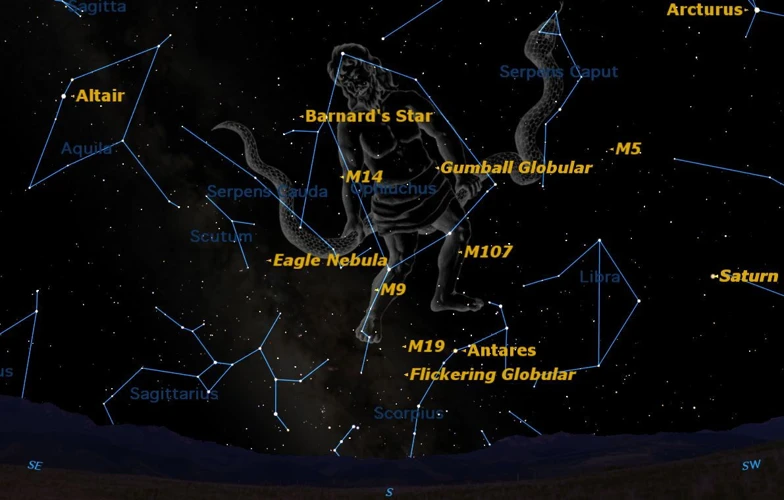
The future of Scorpius exploration holds immense possibilities for astronomers and researchers. With advancements in technology and scientific methods, we can expect even greater insights into this captivating constellation.
One area of focus for future exploration revolves around the study of exoplanets and extrasolar systems within Scorpius. As we continue to discover new exoplanets beyond our solar system, Scorpius presents a prime region for further investigation. By analyzing the characteristics of these distant worlds, scientists can deepen our understanding of planetary formation, habitability, and the potential for life beyond Earth.
The mysteries surrounding stellar evolution and black holes within Scorpius continue to intrigue scientists. With the aid of powerful telescopes and observatories, researchers aim to gain a clearer understanding of the life stages of stars within the constellation. They also seek to unravel the secrets of black holes, their formation, and their impact on surrounding celestial bodies.
In the realm of professional observatories, Scorpius remains an enticing target. From the Southern African Large Telescope (SALT) to the Cerro Tololo Inter-American Observatory (CTIO) in Chile, these state-of-the-art facilities offer astronomers unique opportunities to delve deeper into the mysteries of the cosmos. The future promises new discoveries as these observatories contribute to our knowledge of Scorpius and the universe as a whole.
On the other hand, amateur stargazing continues to play a crucial role in the exploration of Scorpius. Aspiring astronomers and enthusiasts can use telescopes and binoculars to observe the celestial wonders within this constellation. By actively engaging in citizen science projects and contributing to data collection, amateur stargazers are making valuable contributions to our understanding of Scorpius.
As we look ahead, the future of Scorpius exploration is filled with excitement and anticipation. With ongoing technological advancements and the dedication of astronomers and stargazers alike, we can expect to unravel even more mysteries within this enigmatic constellation. The secrets of Scorpius await, offering us endless opportunities to expand our understanding of the universe.
Conclusion

The mysteries of the Scorpius constellation have been unraveled, shedding light on its ancient origins, cultural significance, and scientific discoveries. From its portrayal in ancient Mesopotamia to its connection with Greek mythology, Scorpius has captivated the human imagination for millennia. The diverse interpretations of Scorpius across different cultures further emphasize its universal appeal and symbolic significance. Scientifically, Scorpius has been a focal point for astronomers, leading to groundbreaking discoveries such as exoplanets and stellar evolution. By exploring the night sky through telescopes and observatories, both amateur stargazers and professional astronomers continue to uncover new wonders within Scorpius and the wider cosmos. As we look to the future, the exploration and understanding of Scorpius are likely to deepen, unveiling even more secrets of this captivating constellation. In conclusion, Scorpius stands as a testament to human ingenuity, curiosity, and our innate connection to the vast and mysterious universe.
Frequently Asked Questions

1. What is the significance of the constellation Scorpius?
Scorpius has held cultural and mythological significance for ancient civilizations and is often associated with themes of power, transformation, and balance. It has been a subject of fascination and inspired stories and legends for centuries.
2. Where can Scorpius be seen in the night sky?
Scorpius is visible in the southern hemisphere during the summer months and can be spotted in the zodiac region between the constellations of Libra and Sagittarius. It can be best observed in areas with minimal light pollution.
3. What are some of the brightest stars in Scorpius?
Scorpius boasts several prominent stars, including Antares, a red supergiant and one of the brightest stars in the night sky. Other notable stars include Shaula, Lesath, and Girtab.
4. Are there any notable features within Scorpius?
Yes, Scorpius is home to many impressive features. One of the most intriguing is the Scorpius X-1, a binary star system consisting of a black hole and a blue supergiant. This system is a prolific source of X-rays and has provided valuable insights into the study of black holes.
5. What is the connection between Scorpius and Greek mythology?
In Greek mythology, Scorpius is often associated with the story of Orion the Hunter. Orion was stung by a scorpion sent by Gaia, the Earth goddess, and both Orion and the scorpion were placed in the sky as constellations to forever commemorate their fateful encounter.
6. How does Scorpius feature in Native American legends?
Native American cultures have diverse interpretations of Scorpius. For example, the Navajo people view Scorpius as a representation of balance and harmony, while the Lakota Sioux associate it with the constellation of Blue Star Woman, a mythical figure who brought the stars to her people.
7. Are there any exoplanets discovered within Scorpius?
Yes, scientists have discovered exoplanets within the boundaries of Scorpius. For example, the star HD 142022 hosts an exoplanet about eight times the mass of Jupiter, showcasing the potential for planetary systems in this constellation.
8. What is the role of Scorpius in stellar evolution?
Scorpius is a region rife with stellar activity. Stars within Scorpius undergo various stages of evolution, including the development into giant and supergiant stars. The study of these processes within Scorpius provides valuable insights into the life cycles of stars.
9. Can Scorpius be observed with amateur telescopes?
Yes, Scorpius can be observed with amateur telescopes. Its prominent stars and interesting features make it an appealing target for stargazers who wish to explore the wonders of the cosmos.
10. Are there any dedicated observatories studying Scorpius?
There are several observatories around the world that study the celestial objects within Scorpius. Notable examples include the European Southern Observatory (ESO) in Chile, which benefits from the exceptional observing conditions in the region, and the Las Cumbres Observatory, a global robotic telescope network that performs continuous observations of astronomical objects, including those within Scorpius.
References
- Unraveling the secrets of the Universe
- The Constellations on Sea and Sky
- Exploring the Mysteries of the Constellation Universe – Ant Seed
Frequently Asked Questions

1. How did the Scorpius constellation get its name?
The Scorpius constellation gets its name from the Latin word for scorpion, referring to the shape of the celestial figure.
2. What is the significance of the bright star named Antares in Scorpius?
The bright star Antares, also known as “the heart of the scorpion,” is one of the most luminous stars in the night sky and holds great astronomical importance.
3. Can I see Scorpius from anywhere in the world?
Scorpius can be seen from most parts of the world, except for the extreme northern latitudes, where it remains relatively low in the southern horizon.
4. Are there any famous deep-sky objects within Scorpius?
Yes, Scorpius hosts several famous deep-sky objects, including the Cat’s Paw Nebula, the Butterfly Cluster, and the globular cluster named Messier 4.
5. Is Scorpius visible all year round?
No, Scorpius is a seasonal constellation visible predominantly during the southern hemisphere’s winter months and the northern hemisphere’s summer months.
6. How far away is the closest star to Earth within Scorpius?
The closest star to Earth within the Scorpius constellation is Girtab, located approximately 29.7 light-years away.
7. Can I spot any planets in the Scorpius constellation?
Yes, Scorpius is known to host several planets, including the exoplanets named Gliese 667Cc and Gliese 667Cf.
8. Are there any notable meteor showers associated with Scorpius?
Yes, the Scorpiids meteor shower, also known as the Alpha Scorpiids, occurs annually in the months of May and June.
9. What role did Scorpius play in ancient astrology?
In ancient astrology, Scorpius was associated with transformation, intensity, and passion, often symbolizing the attributes of the scorpion in various astrological interpretations.
10. Can I observe Scorpius with a basic telescope?
A basic telescope will allow you to observe the bright stars and some of the deep-sky objects within Scorpius, providing a fascinating astronomical experience.







